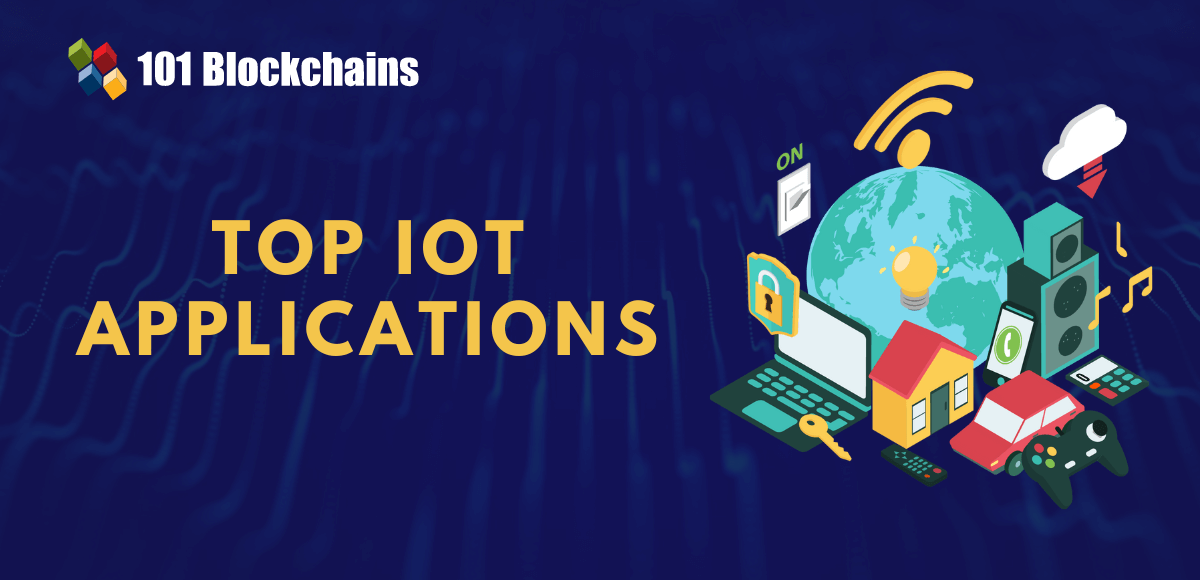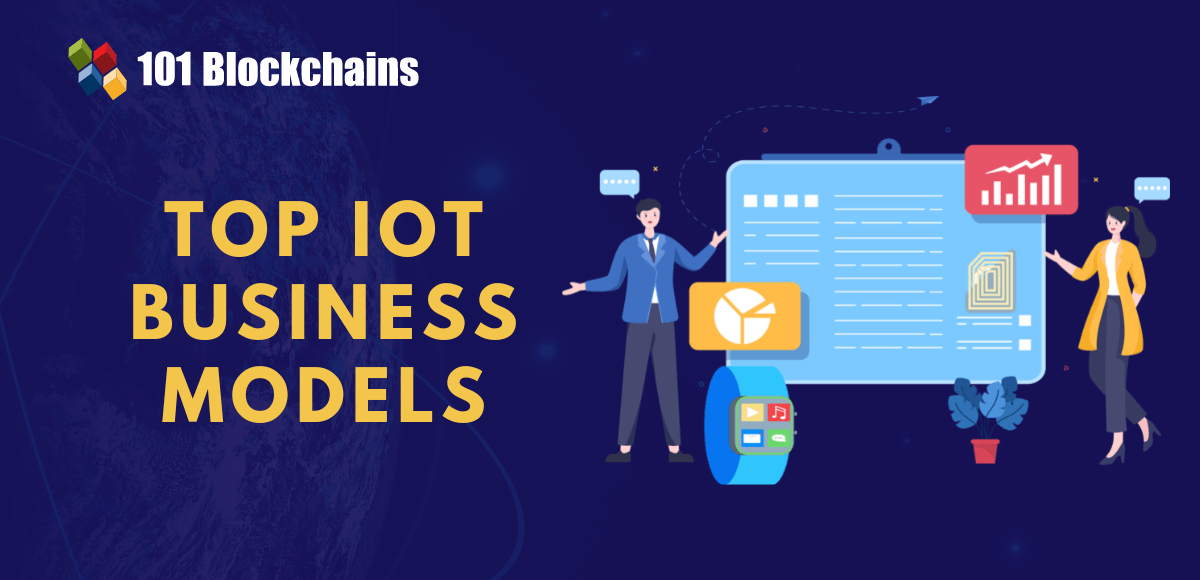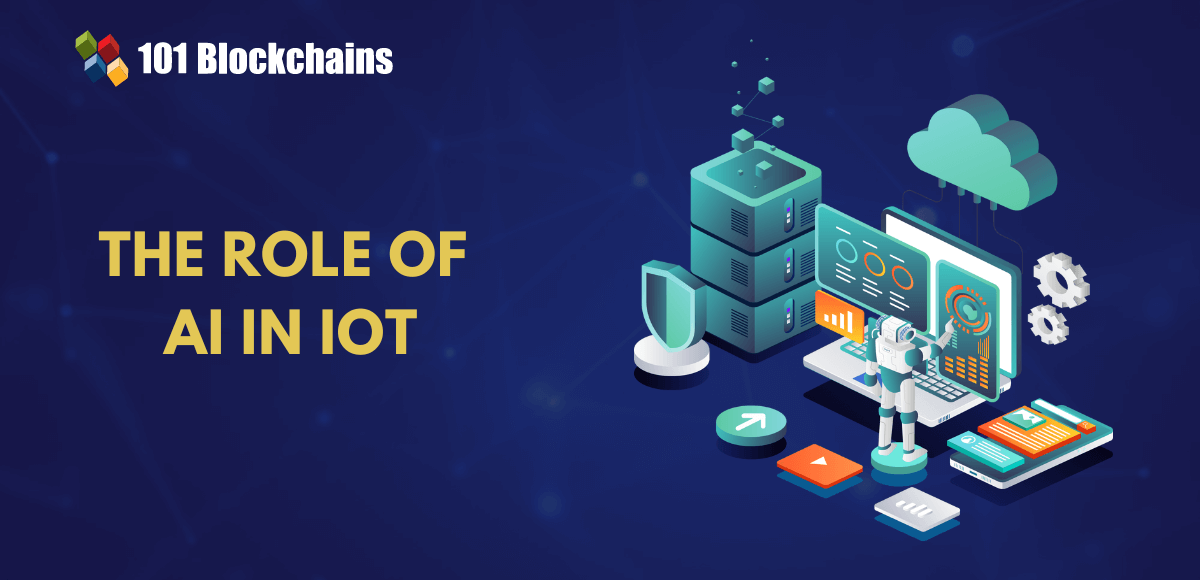Learn how blockchain truly works, master key definitions, and uncover what makes smart contracts so "smart." Dive into the fundamentals, gain valuable insights, and start your blockchain journey today!
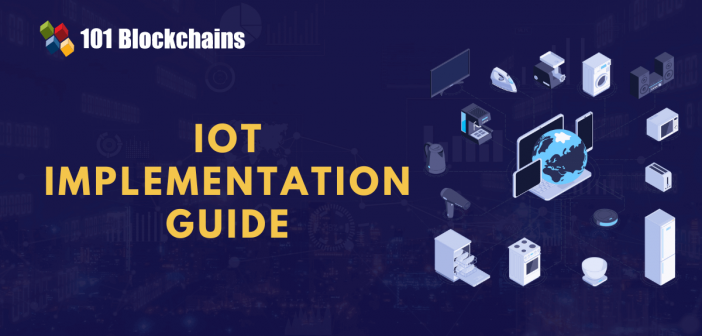
- IoT
James Howell
- on April 19, 2023
Step By Step Guide To Implement IoT
Internet of Things or IoT devices is emerging as the next big thing in the field of technology right now. IoT devices have become a common requirement in almost every industry across different countries in the world. For example, IoT implementation in healthcare has enabled benefits of real-time tracking of patient vitals and health conditions.
Similarly, industrial implementations of IoT, such as RFID tags, have helped streamline supply chain operations. The progress of IoT is also visible in the expansion of the global IoT market, which might reach a value of $1.1 trillion in 2023. In addition, the number of IoT devices worldwide could go beyond 15 billion in 2023. As of now, the top industries involved with IoT include healthcare, construction, transportation, manufacturing and energy.
The common applications of IoT are evident in asset tracking, quality control, predictive maintenance, supply chain management and health monitoring. Businesses interested in adopting Internet of Things must use a professional IoT implementation guide for establishing powerful, resilient and effective infrastructures. The following post offers a detailed guide to implementation of IoT systems in businesses with information about best practices and critical risks.
Importance of IoT Implementation
Before asking questions like “How do you implement IoT?” you must learn about the importance of Internet of Things or IoT. Internet of Things works by extending internet connectivity to physical devices and objects you use every day, such as cameras and vehicles. IoT facilitates connectivity alongside improving information sharing and communication among internet-connected devices. In addition, IoT networks can use collected data to improve user experiences and how users interact with IoT systems.
The understanding of IoT implementation also involves awareness of the two distinct variants of IoT. The first variant of IoT is Customer IoT, which focuses on ensuring convenience for customers. On the other hand, you have Industrial IoT, which focuses more on industrial applications and systems. The emphasis on industrial IoT implementation would also involve implications towards ensuring better output, IoT security and efficiency.
At the same time, industrial IoT would also work towards achieving better Return on Investment or ROI. Furthermore, the support of technological advancements such as artificial intelligence, machine learning and 5G wireless networks can boost industrial use cases of IoT. Therefore, IoT can evolve as a formidable highlight among technologies of the future by enabling an ecosystem where people and devices can interact seamlessly with each other.
Want to understand the fundamentals of the Internet of Things (IoT)? Enroll now in IoT Fundamentals Course
What Are the Challenges of IoT Implementation?
The introduction of new technologies also invites significant challenges for adoption and problems in maturity of the technology. You cannot think of an IoT implementation strategy without accounting for the challenges. Let us take a look at the following prominent challenges related to IoT implementation.
-
Security
IoT devices send data to the cloud or in-house storage systems, which must stay connected to the internet at all times. However, connecting valuable and sensitive data to the internet at all times creates security vulnerabilities. For example, physical damage to storage systems or hacking attacks on storage servers and devices could put user information at risk.
-
Procuring Hardware
Another significant challenge in an IoT implementation guide points to the issues in procuring hardware. The problems with procuring hardware emerge in the form of adaptability. IoT networks must have the capability to address existing needs while ensuring adaptability to future trends. For example, open, integrated software platforms and hardware alongside a real-time network capable of scaling with new technologies are essential for creating modern IoT systems.
-
Investment Costs
The biggest problem for businesses seeking guides on IoT implementation points to cost issues. You would need a substantial amount of initial capital investment for setting up the hardware, integrations, infrastructure development and personnel costs.
-
Complexity of Infrastructure
While obtaining the right hardware could be a significant obstacle, the prominent challenges in IoT implementation are evident in infrastructure development. Apart from the challenge of infrastructure costs, you have to struggle with complexities of implementing the technical and communication infrastructure for IoT networks. For example, internet connectivity, databases, systems tailored for IoT management and network coverage.
What Do You Need for IoT Implementation?
The notable challenges for IoT implementation offer a basic impression of the requirements for IoT implementation. However, an industrial IoT implementation plan must start with a clear outline of specific requirements for the proposed IoT solution. Here are some of the essential requirements you would need for implementing IoT in real-world use cases.
Cloud computing is a mandatory requirement for IoT implementation as it facilitates storage and processing of structured and unstructured data. It can help in capitalizing on the actual potential of user data by extracting real-time insights.
User experience or the front-end user interface of the IoT solution is also a vital requirement in IoT implementation. It is an essential factor that can drive the adoption of IoT solutions.
Accessibility is another prominent highlight for IoT implementations as it ensures that users can access the functionalities of the IoT solution, irrespective of time and location.
Smart machines are also one of the basic requirements for IoT implementations. Smart devices serve as the primary components which can facilitate benefits of IoT.
You can also notice security as an inevitable necessity for IoT implementation in healthcare or other industries. IoT security serves an important role in facilitating safety for sensitive and confidential information in IoT implementations.
Big Data analytics also serves as a vital component for assessment of big data to obtain intelligent insights. The use of Big Data analytics for industrial use cases can leverage real-time insights for achieving optimal results.
Asset management functionalities are also useful for IoT implementations as it would enable control over monitoring the IoT assets. Starting from real-time insights on device health status to requirements for maintenance, asset management could offer many value-based advantages.
Want to familiarize yourself with the technology stack associated with IoT? Enroll Now in Internet Of Things (IoT) – Intermediate Level Course!
Steps for IoT Implementation
The details of essential requirements for an IoT implementation strategy can provide the motivation required to implement IoT systems. However, awareness of what you can implement does not provide anything about how you can implement IoT. In addition, you must also know the objectives of the IoT implementation.
You should look for ways in which IoT can improve efficiency and productivity of your business. For example, businesses can seek IoT as an instrument for enhancing existing products and services with the addition of new functionalities. On the other hand, IoT can serve effective opportunity for opening a new line of business. Here are the important steps you must follow for IoT implementations.
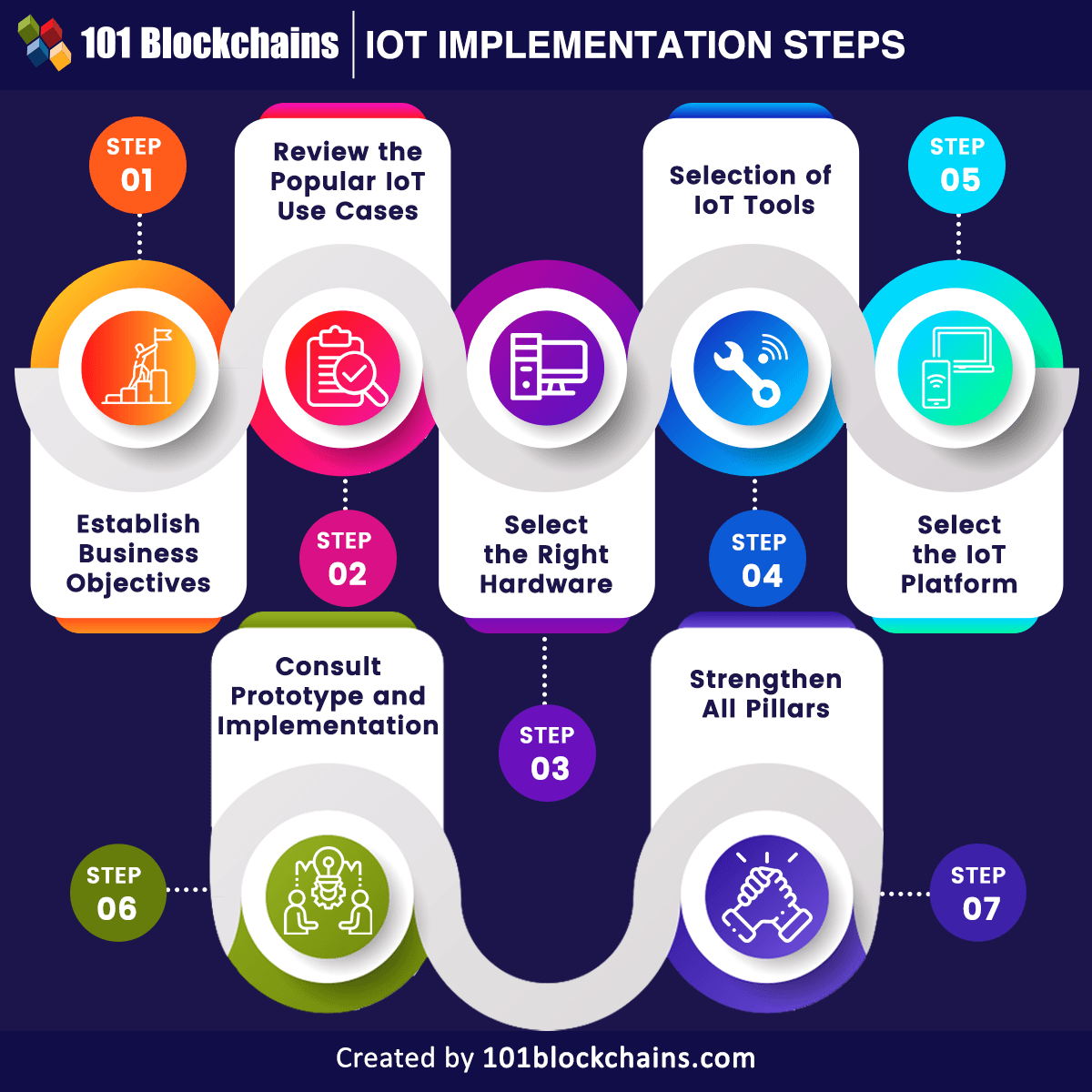
-
Establish Business Objectives
The first step in answers to ‘How do you implement IoT?’ would focus on the need for setting clear objectives. You must come up with clear definitions of what you want to achieve with the IoT implementation. The business objectives for IoT implementation could point at the problem you want to solve and the best approaches for solving the problem.
In addition, the business objectives must also focus on the short-term and long-term goals of the IoT project. The outline of objectives could help you achieve the IoT implementation gradually in different stages. It can help you manage the amount of annual or monthly expenses on process optimization.
-
Review the Popular IoT Use Cases
IoT has been around for a long time and has been developed with new features in certain areas. With the growth in enterprise IoT initiatives, the use cases of IoT have spread across every industry. Once you have identified challenges in IoT implementation and the business objectives, you must check whether the existing use cases of IoT can solve your problems.
Some of the common use cases of IoT for different industries include preventive maintenance, environmental monitoring, process control and optimization, automatic refilling and access control and security. Each use case has distinct innovative functionalities for improving legacy systems and operations in industries.
Preventive maintenance is one of the most common use cases in industrial IoT implementation for maintaining track of device health. Asset tracking and management with IoT could help in tracking asset health and ensures timely and cost-effective maintenance schedules.
Environmental monitoring applications of IoT have been useful in agriculture by offering environmental data, such as humidity, soil humidity, temperature, pollution and water quality. The review of tested IoT solutions could help you find whether you can implement one of them to solve your problem. As a result, you can achieve a cost-effective implementation without the need for experimentation and tests.
-
Select the Right Hardware
The decision to adoption of IoT technology also calls for the responsibility of identifying how you will build the IoT network. You should identify every asset and device you can integrate into the network. The hardware for IoT solutions includes sensors, which can provide data regarding certain aspects, such as color, pressure, volume, sound, temperature or humidity. An IoT implementation guide would also draw your attention toward the network you would use for the IoT solution. For example, you would need connection devices to bridge the gap between hardware and sensors for collecting data.
Some of the other essential hardware options for your IoT network would include actuators and edge computers. Your business objectives would play a crucial role in determining hardware requirements effectively. Businesses can also seek new ways to respond to “How do you implement IoT?” with new gateways and protocols tailored specifically for IoT. At the same time, you must pay attention to compatibility between IoT protocols and devices. You should also focus on interoperability and connectivity as essential requirements before committing to a purchase.
-
IoT Tools
The next step in implementation of IoT would focus on a selection of IoT tools. IoT devices could be any internet-connected device that can collect data from sensors and process it before sending it through the internet to selected endpoints; IoT devices must also have the features for receiving commands by leveraging the internet and controlling actuators.
The examples of IoT implementation in healthcare and other industries draw attention to development kits required for creating prototypes of smart devices. As of now, you can find different IoT-centric devices which can ensure usability of devices in accordance with user habits with predictive capabilities.
The innovative smart devices employed in IoT solutions are generally used for customer-centric IoT solutions. However, industrial implementations of IoT could also leverage smart IoT tools. For example, smart thermostats, lights and locks, IP cameras, voice controllers and drones.
The feasibility of industrial IoT implementation of these examples can seem irrelevant from the production perspective in certain cases. On the other hand, businesses have discovered effective ways to leverage examples for interesting use cases. For example, IoT cameras could serve as an additional advantage for security of workspaces in businesses through remote monitoring.
Curious to know how the IoT business mechanisms work? Enroll Now in the Internet Of Things Business Impact Course
-
IoT Platform
The IoT platform is the essence of any IoT network, as it offers the tools for controlling all the connected devices and other highlights of the IoT network. You need the IoT platform for sending commands to IoT devices and collecting data, primarily through cloud integration.
Every IoT implementation strategy requires an IoT platform which you can obtain from specialized providers or create an in-house solution. The IoT platform is vital for long-term operations of the IoT systems as it defines the approaches for communication between IoT devices and management of data.
-
Prototype and Implementation
Consult with technical experts and teams from different departments to start the IoT implementation project. You would need diverse expertise for different stages of the project, including design, prototyping and implementation. The important personnel required in this stage of IoT implementation include a computer engineer, software engineer, IT expert, automation engineer, manufacturing expert, mechanical engineer and electronic engineer. Following the implementation process, businesses would have to rely on roles such as data scientists, statisticians, security officers and information systems experts.
-
Strengthen All Pillars
The final step in ensuring an effective industrial IoT implementation would point to strengthening all pillars of the IoT network. You need to integrate Big Data and machine learning functionalities in the IoT solution alongside ensuring the best analytics features. The most important highlight of an IoT implementation is security. You must follow all the best practices and necessary guidelines for safeguarding IoT networks.
Start learning IoT (Internet Of Things) with World’s first IoT Skill Path and understand how it’s related to the blockchain with industry experts Now!
What Are the Risks of IoT Implementation?
The overview of challenges in IoT implementation is important before the implementation. However, you must also know about the expected risks with an IoT implementation project. Some of the prominent risks include failure of implementation, security lapses and connectivity failure. Above everything else, the lack of innovation and development in the IoT network can put your competitors before you in the race for growth. Businesses have to abide by their goals and commit dedicated efforts to ensure successful IoT implementations.
Bottom Line
The IoT implementation guide offered viable insights on how to approach a project for implementing IoT solutions. You can expect promising rewards with IoT projects, especially for industrial use cases. Imagine a network of devices helping you control every aspect of the operations of your business and improving user experiences.
Businesses can develop IoT solutions with effort and dedication while traversing many challenges. On the other hand, a clearly defined IoT implementation strategy can spell the difference between success and failure of IoT projects. Learn more about the implementation of IoT for businesses and revision of IoT business model designs for IoT implementations.




